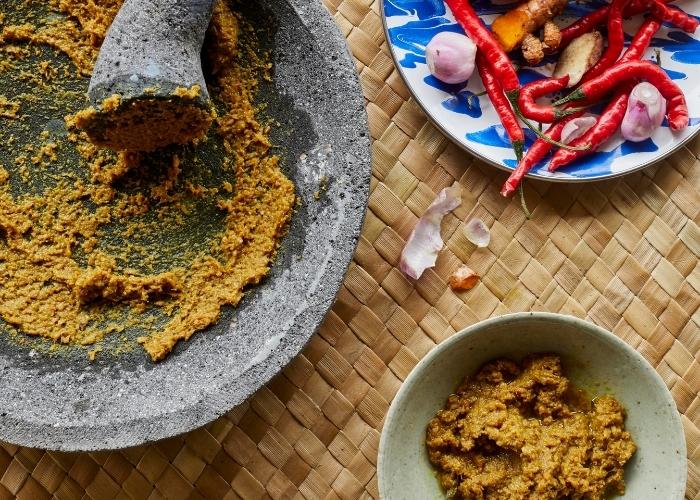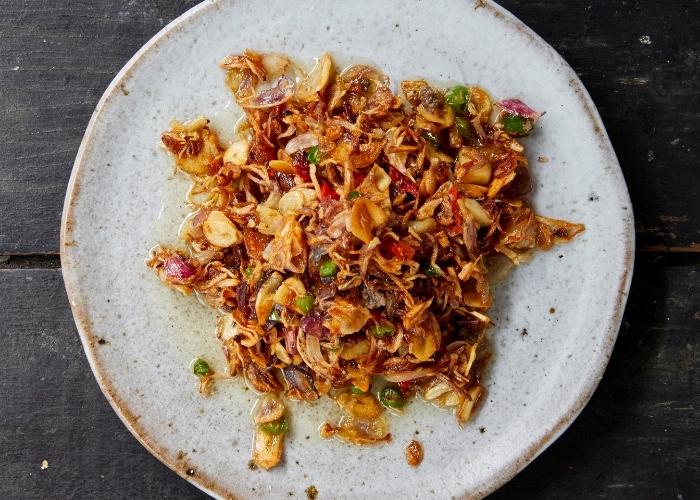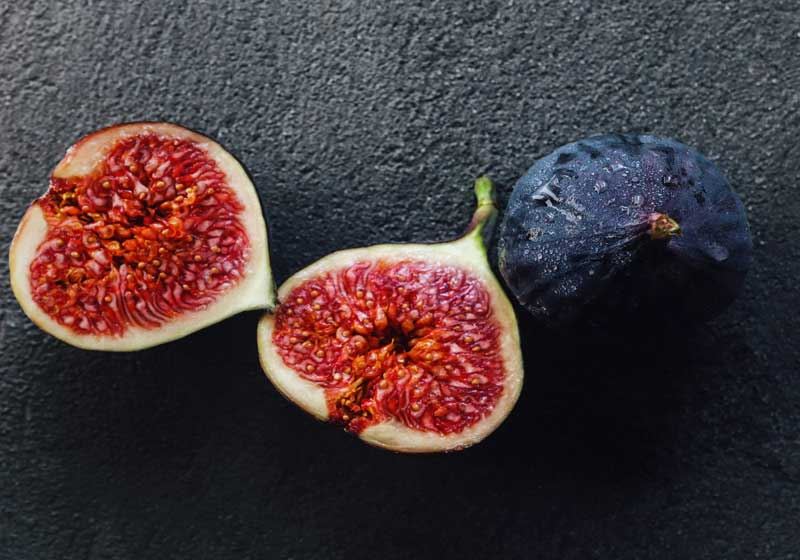Paon is the Balinese word for ‘kitchen’ and is derived from the word for ashes.
More than a place to cook, a paon is an altar, an apotherary and a bridge to the natural world, where the hand of the cook joins forces with the earthly and heavenly elements to create nourishment, healing and connectivity to the universe.
Direct from the traditional home kitchens of Bali, Paon: Real Balinese Cooking offers a deeper understanding of Balinese culture and cuisine with more than 80 dishes and beautiful photography capturing life and food from across one of Australia’s favourite holiday destinations.
Let Balinese locals Tjok Maya Kerthyasa and I Wayan Kresna Yasa take you on a journey through rice fields, food forests, coastal towns and bustling markets in six chapters: Foundations, From the Fields, From the Land, From the Sea, From the Pasar and Rare and Ceremonial.
Out of all the recipes in this book, this is probably the most important. Let’s rephrase that – it is the most important. Base genep, or base gede, is the backbone of Balinese cooking.

It lends its complexity, punch and turmeric tinge to most of the island’s meat-based dishes – ceremonial sates, homemade stews and grilled delicacies alike. Its name is a testament to its blockbuster list of ingredients and uses – base means spice, genep means complete and gede means large.
All Balinese cooks have their own take on base genep, and many adjust the quantities of each ingredient to suit the dish they’re cooking. This is a formula that works nicely across all the recipes in this book, but feel free to experiment to suit your taste.
Sambal Goreng is a fried sambal that’s often served as a condiment, or tossed through a dish as a finishing element - most people make it fresh every day. It’s hot, punchy and sweet from the golden-brown, caramelised fried shallots, garlic and chillies, all slightly crisped around the edges but still juicy on the inside.

Sambal goreng has an incredible umami quality that’ll make you want to serve it with everything, including Urab kacang, Jukut nangka and most poultry dishes.
Taluh Mepindang are spiced eggs that feature on most daily household menus; they also make their way into lots of warungs (local eateries) and buffet spreads on special occasions.
"In fact, it’s hard for me to imagine a complete meal without them. I love how the egg whites absorb the colours and flavours of the spices and how the sauce becomes thick and caramelised, just asking to be soaked up by a side of steamed rice,” Maya says.

Balinese food can be as modest as a plate of fresh pineapple with sea salt and chopped chillies; or as complex as minced duck massaged with grated coconut and spices, then pressed around bamboo skewers, wrapped in banana leaves and grilled slowly over coconut husks.
In Paon, all of these takes on Balinese cooking – from the simple to the spectacular – come together in an easy and enjoyable format for the avid cook to attempt at home.







